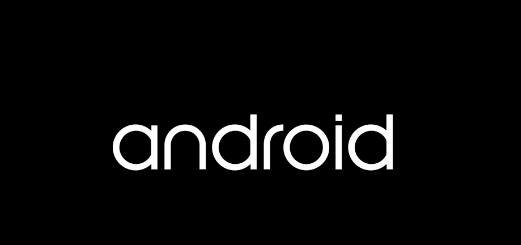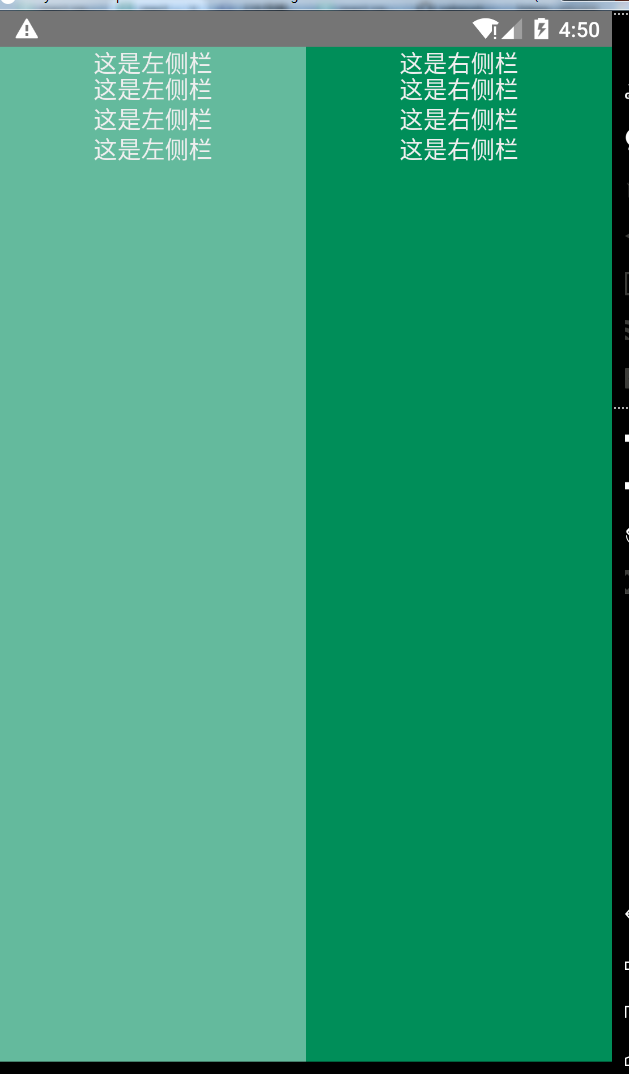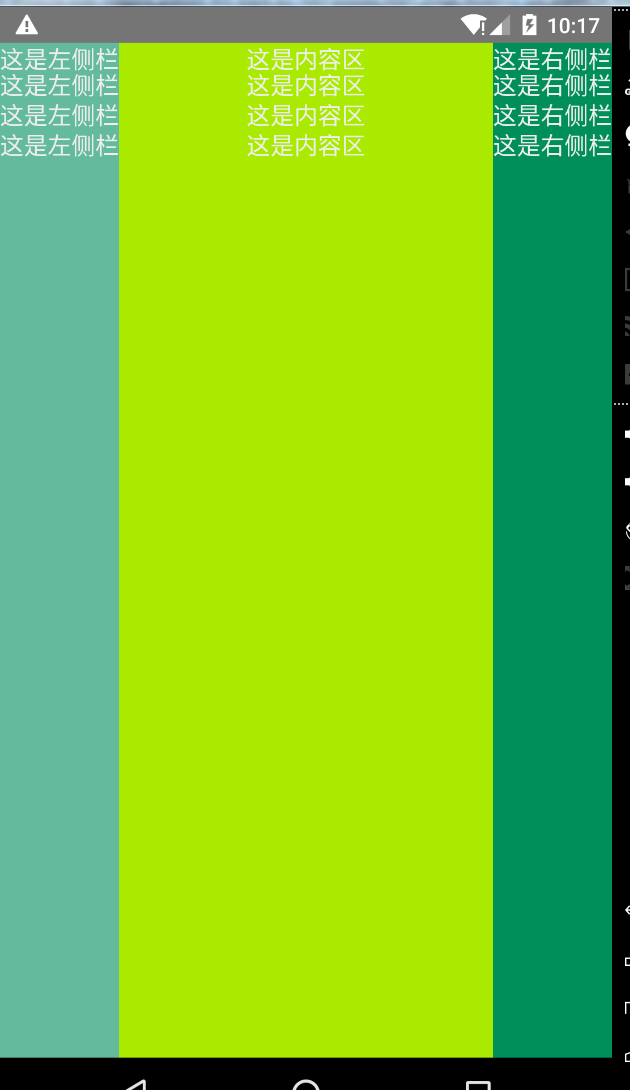搭建基础环境
- JDK(必须,不解释)
- SDK(建议使用Android Studio,集成SDK以及模拟器)
- genymotion(如果是使用真机或者Android Studio自带的模拟器,可以选择不装)
- NVM(node版本控制器,需要node4.0以上版本)
以上配置不是必须,可自行选择适合自己的环境,部分安装过程可能会涉及到翻墙,需要配置代理
配置踩坑记录
genymotion
这里选择genymotion模拟器来讲解,也会提一下Android Studio自带的模拟器的一些注意点,使用真机的朋友可跳过这段。
genymotion的安装有2种模式,一种是带有Oracle VM VirtualBox虚拟机,另外一种是纯净版,genymotion的运行依赖VirtualBox虚拟机。
选择下载android6.0-API 23模拟器

(如果无法显示API列表,请配置代理Settings->NetWork->Use HTTP Proxy)
启动模拟器,可能会有部分人卡在android启动界面上面,无法进入

genymotion的运行基于X86的架构,比起arm,X86的性能更流畅。我们需要使用X86架构的话,还需要安装HAXM。
1、打开SDK Manager->Extras->Intel x86 Emulator Accelerator,安装即可,如果没有任何东西显示,还是代理问题,Tools->Options->Proxy Settings
2、进入C:Users用户AppDataLocalAndroidsdkextrasintelHardware_Accelerated_Execution_Manager
安装intelhaxm-android.exe,安装出错,请参考这里
至此我们就能进入模拟器界面
Android Studio
如果想使用android studio自带模拟器,可以打开AVD Manager->Create Virtual Device->选择自己需要的android版本
值得注意的是,模拟器默认选择X86架构,如果你不喜欢,你需要自己手动改成arm架构
 NVM
NVM
这里选择用NVM来控制node版本,如果你已经装过node4.0以上的版本,就跳过这里。
安装方式和使用文档,github上面讲的很清楚,这里说下代理的配置,其实也就是npm的代理,配置全局代理
npm config set proxy=you proxynpm config set https-proxy=you https proxy
React-native初始化
心理默默祈祷以下命令千万不要错误。。。
npm install -g react-native-clireact-native init AwesomeProjectcd AwesomeProjectreact-native startreact-native run-android
果然。。。好吧,这里分享下自己遇到的一些问题
- npm install -g react-native-cli:出错的最大可能就是node版本低于4.0或者代理没配置成功
- react-native run-android:这个命令会下载gradle依赖,执行失败的原因大部分也是因为代理的问题
进入C:Users用户AppData.gradle,打开gradle.properties(不存在就新建一个),修改
systemProp.https.proxyHost=You https proxysystemProp.https.proxyPort=You https proxyPortsystemProp.http.proxyHost=You proxysystemProp.http.proxyPort=You proxyPort
总算是把android应用程序跑起来了,真累人啊
 布局
布局
这里以三种经典布局来讲解react-native布局概念,主要以flexbox为主,react native中有两个基本元素< View >与< Text >,分别类似于web端div和span,用于布局和修饰。需要注意的是,react native不是所有的CSS属性都支持,这里有react native所支持的CSS属性。
准备工作
在JSX中写样式还是有点不习惯,这里使用react-native-css模块来编写样式,安装、使用过程如下:
npm install react-native-css -g react-native-css -i style.css -o style.js --watch
布局讲解
左右布局
由于是横向布局,我们需要flex-direction: row(默认纵向布局),左右以1:1方式排版,就都需要flex:1,布局容器也需要加上flex:1,表示为伸缩容器。由于react native没有br标签,需要换行只能将换行符插入。
样式表:
wrap { flex:1; flex-direction: row; background-color: yellow;}left{ flex:1; background-color: #64BA9D;}right{ flex:1; background-color: #008E59;}text{ padding:10; font-size:16; color:#EEEEEE; line-height:20; text-align: center;}页面结构:
<View style={styles.wrap}><View style={styles.left}> <Text style={styles.text}>这是左侧栏{"
"}这是左侧栏{"
"}这是左侧栏{"
"}这是左侧栏{"
"} </Text></View><View style={styles.right}> <Text style={styles.text}>这是右侧栏{"
"}这是右侧栏{"
"}这是右侧栏{"
"}这是右侧栏{"
"} </Text></View></View> 左中右布局
左中右布局
左右定宽,中间占满。
样式表:
wrap { flex:1; flex-direction: row; background-color: yellow;}left{ width: 80; background-color: #64BA9D;}centent{ flex:1; background-color: #a9ea00;}right{ width: 80; background-color: #008E59;}text{ padding:10; font-size:16; color:#EEEEEE; line-height:20; text-align: center;}页面结构:
<View style={styles.wrap}><View style={styles.left}> <Text style={styles.text}>这是左侧栏{"
"}这是左侧栏{"
"}这是左侧栏{"
"}这是左侧栏{"
"} </Text></View><View style={styles.centent}> <Text style={styles.text}>这是内容区{"
"}这是内容区{"
"}这是内容区{"
"}这是内容区{"
"} </Text></View><View style={styles.right}> <Text style={styles.text}>这是右侧栏{"
"}这是右侧栏{"
"}这是右侧栏{"
"}这是右侧栏{"
"} </Text></View></View> 上中下布局
上中下布局
类似新闻和门户APP的布局,上下贴边,中间为内容区。
样式表:
wrap { flex:1; flex-direction:column;}top{ height: 40; background-color: #008E59;}centent{ flex:1; background-color: #64BA9D;}bottom{ height: 40; background-color: #a9ea00;}text{ padding:10; font-size:16; color:#fff; line-height:20; text-align: center;}页面结构:
<View style={styles.wrap}><View style={styles.top}> <Text style={styles.text}>头部信息 </Text></View><View style={styles.centent}> <Text style={styles.text}>这是内容区{"
"} </Text></View><View style={styles.bottom}> <Text style={styles.text}>尾部信息 </Text></View></View>综合布局
简单模拟网易新闻APP布局:

我们可以简单看看APP布局方式,总体来说就是上中下的布局方式,我们可以初步先编写外部结构
页面结构:
<View style={styles.wrap}><View style={styles.top}> <Text>头部</Text></View><View style={styles.cententWrap}> <Text>新闻主题</Text></View><View style={styles.bottom}> <Text>尾部导航 </Text></View></View>样式表:
wrap { flex:1; flex-direction:column;}top{ height: 40; background-color: #EC403C;}cententWrap{ flex:1; flex-direction:column;}bottom{ height: 40;}大致结构算是搭建完毕,开始完善头部展示(偷懒、不想切图,就用个title代替就好啦~~~)
页面结构:
<View style={styles.wrap}><View style={styles.top}> <Text style={styles.topTitle}>网易</Text></View><View style={styles.cententWrap}> <Text>新闻主题</Text></View><View style={styles.bottom}> <Text>尾部导航 </Text></View></View>样式表:
topTitle{ margin-top: 15; margin-left: 20; text-align: left; font-size: 14; color:#FFF;}头部内容完成之后,就完善内容区域的导航条,但是react-native并没有提供ul、li标签(也许以后有),这个是要View来代替ul,Text代替li,代码和数据如下:
页面结构:
var cententNav = ["头条", "热点", "娱乐", "体育", "财经"];return ( <View style={styles.wrap}><View style={styles.top}> <Text style={styles.topTitle}>网易</Text></View><View style={styles.cententWrap}> <View style={styles.cententNav}>{ cententNav.map(function(el, index){return <Text style={styles.cententNavText}> <Text style={index == 0 ? styles.textR : ""}>{cententNav[index]}</Text></Text> })} </View></View><View style={styles.bottom}> <Text>尾部导航 </Text></View> </View>);样式表:
cententWrap{ flex:1; flex-direction:column;}cententNav{ flex-direction: row; height: 20; margin-left: 5; margin-top: 5; margin-right: 5;}cententNavText{ width: 60; font-size: 14; color: #9C9C9C; margin-left: 10;}新闻主题方面可以划分为左右两栏,左栏固定宽,右栏占满,由于react-native不支持overflow:scroll属性,这里会用到一个ScrollView的滚动条组件来展示新闻概述,篇幅可能较长,底部就不再编写了(就是懒~~),大家各自完善吧,以下是全部的布局代码和样式。
页面结构:
render: function() {// var repeatArr = Array(100).join("1").split("")var cententNav = ["头条", "热点", "娱乐", "体育", "财经"],NEW_DATA = [ {img: "http://7xl041.com1.z0.glb.clouddn.com/new1.png",title: "李克强宴请上合各参会领导人",content: "称会议阐释了上合组织“大家庭”的深厚友谊和良好氛围",typeImg: "http://7xl041.com1.z0.glb.clouddn.com/new-type1.png" }, //.....类似数据];return ( <View style={styles.wrap}><View style={styles.top}> <Text style={styles.topTitle}>网易</Text></View><View style={styles.cententWrap}> <View style={styles.cententNav}>{ cententNav.map(function(el, index){return <Text style={styles.cententNavText}> <Text style={index == 0 ? styles.textR : ""}>{cententNav[index]}</Text></Text> })} </View> <ScrollView style={styles.centent}>{ NEW_DATA.map(function(el, index){return ( <View><View style={styles.cententLi}> <Image source={{uri: NEW_DATA[index].img}} style={styles.cententImg} /> <View style={styles.rightCentent}><Text style={styles.cententTitle}>{NEW_DATA[index].title}</Text><Text style={styles.cententCentent}>{NEW_DATA[index].content}</Text> </View> <Image source={{uri: NEW_DATA[index].typeImg}} style={styles.cententType} /></View><View style={styles.line}></View> </View>) })} </ScrollView></View><View style={styles.bottom}> <Text style={styles.text}>尾部信息 </Text></View> </View>);}样式表:
wrap { flex:1; flex-direction:column;}top{ height: 40; background-color: #EC403C;}topTitle{ margin-top: 15; margin-left: 20; text-align: left; font-size: 14; color:#FFF;}cententWrap{ flex:1; flex-direction:column;}cententNav{ flex-direction: row; height: 20; margin-left: 5; margin-top: 5; margin-right: 5;}cententNavText{ width: 60; font-size: 14; color: #9C9C9C; margin-left: 10;}centent{ flex:1; flex-direction:column; borderBottomWidth:1;}cententLi{ flex-direction: row; margin-left: 10; margin-right: 10;}cententImg{ width: 80; height: 80;}cententTitle{ font-size: 16; color: #232323; margin-bottom: 3;}cententCentent{ font-size: 12;}rightCentent{ flex: 1; padding-left: 5; padding-top: 5; padding-right: 5; padding-bottom: 5;}cententType{ width: 40; height: 22; position: absolute; bottom: 0; right: 0;}bottom{ height: 40;}text{ padding:10; font-size:16; color:#000; line-height:20; text-align: center;}textR{ font-weight: bold; color:#EC403C;}line{ height: 1; background-color: #E4E4E4; margin-left: 10; margin-right: 10; margin-top: 7; margin-bottom: 7;}






